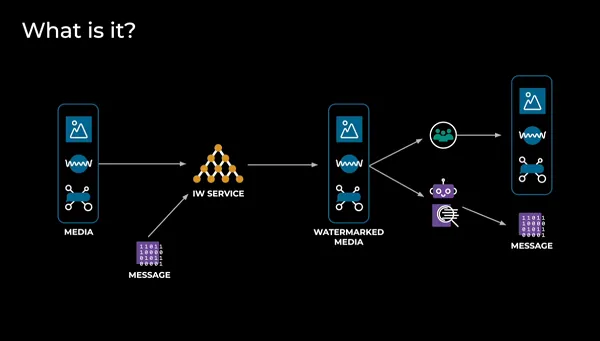Meta Tightens Rules — AI-Generated Posts Will Now Be Clearly Marked
 Adshine.pro11/05/202510 views
Adshine.pro11/05/202510 viewsMeta has unveiled a detailed look at its new invisible watermarking system for video content — a behind-the-scenes technology designed to embed crucial information about how a video was created, without altering how it looks or plays.
Essentially, any video created within Meta’s suite of tools, or uploaded to Facebook or Instagram, will now carry hidden identifiers that cannot be seen or easily removed. These embedded signals contain key metadata, such as:
- The original creator and/or uploader of the video
- - Whether AI tools were used during its production
- - What specific creation tools were involved in making the content

This development could prove pivotal in an era where the lines between human-made and AI-generated visuals are increasingly blurred. As Meta’s Wes Castro puts it:
“We’re beyond the era of mangled fingers and obvious giveaways that something’s AI-generated. So how can we infer if something is real or say Gen AI content?”
Indeed, the proliferation of synthetic media has led to growing calls from users who want the ability to filter AI-generated content out of their social feeds entirely. Pinterest, for instance, recently introduced a feature allowing users to do just that. But such filtering depends on platforms being able to identify AI-made material in the first place — which is precisely where watermarking becomes essential.
Traditional methods, however, fall short. Meta points out that visible watermarks can be distracting, while metadata tags can easily be stripped out or lost when a video is edited, downloaded, or re-encoded.
“Due to its persistence and imperceptibility, invisible watermarking presents a superior alternative,” Meta explains.
The idea is that invisible markers provide platforms with an indelible layer of context — an internal tracking system that remains intact even when videos are reuploaded or slightly modified. This ensures that crucial attribution and transparency data follow the content wherever it goes.
For creators, that also means the process won’t affect the visual integrity of their work. The watermarking operates entirely behind the scenes, allowing Meta to maintain content traceability without impacting viewer experience or algorithmic performance.
Of course, this system isn’t without its limitations. Once content leaves Meta’s ecosystem — say, when a creator downloads and reuploads it elsewhere — those embedded identifiers may be lost. Some users may also attempt to intentionally obscure or reprocess videos to bypass these safeguards, particularly if they believe such labels might limit engagement or reach.
Still, Meta’s approach represents a practical step toward greater transparency in a world increasingly dominated by generative AI tools. By introducing an unobtrusive yet persistent way to track video origins, Meta aims to strengthen trust and accountability across its platforms.
If similar systems are adopted more widely across the industry, invisible watermarking could become a standardized mechanism for authenticating media — helping audiences better understand what’s real, what’s synthetic, and where it all came from.
Meta says it’s continuing to refine the technology, exploring additional encoded tracking layers that could expand the system’s capabilities and resilience over time.
In short, while it’s not a perfect fix, this initiative marks a significant stride toward restoring transparency in the digital media landscape — a quiet but crucial defense in the ongoing battle against misinformation and AI-driven manipulation.
📢 If you're interested in Facebook Ads Account, don't hesitate to connect with us!
🔹 https://linktr.ee/Adshinepro
💬 We're always ready to assist you!